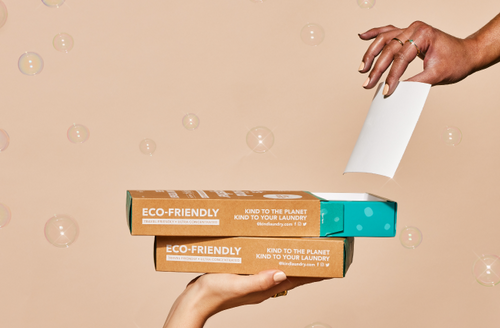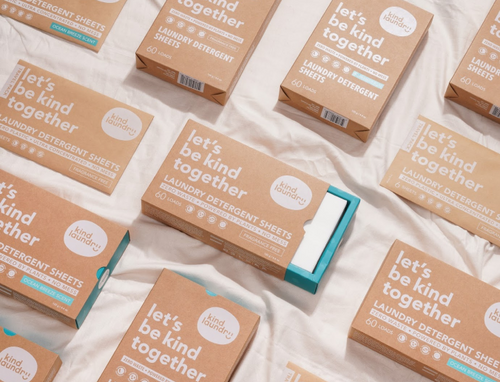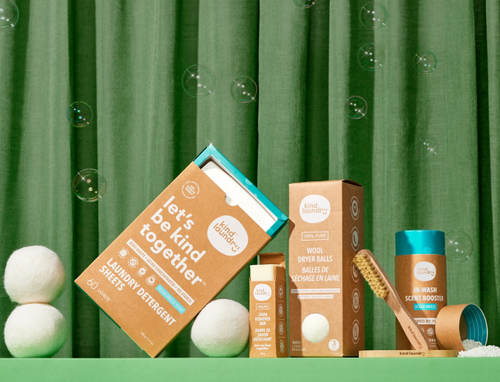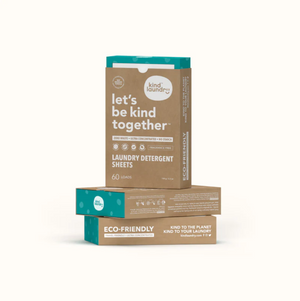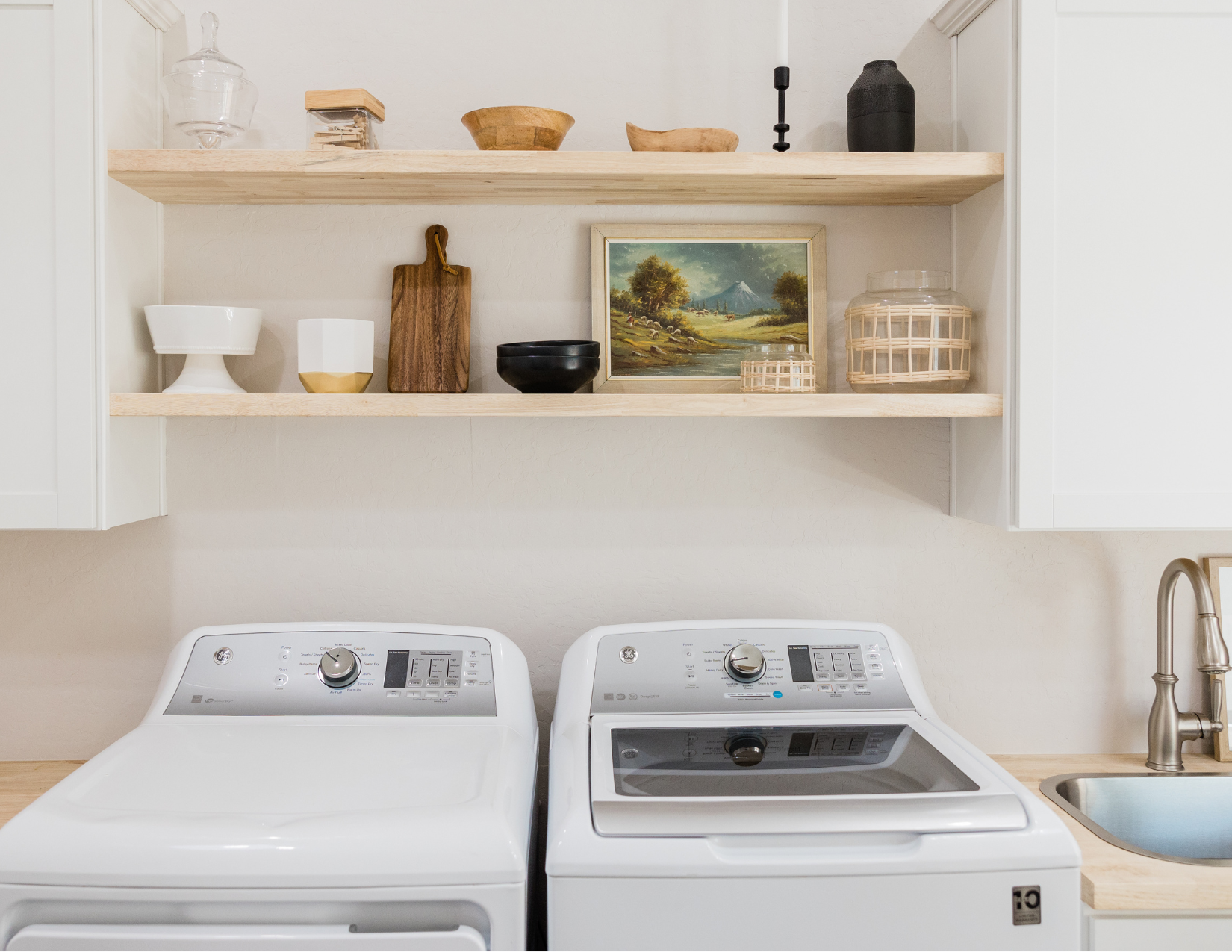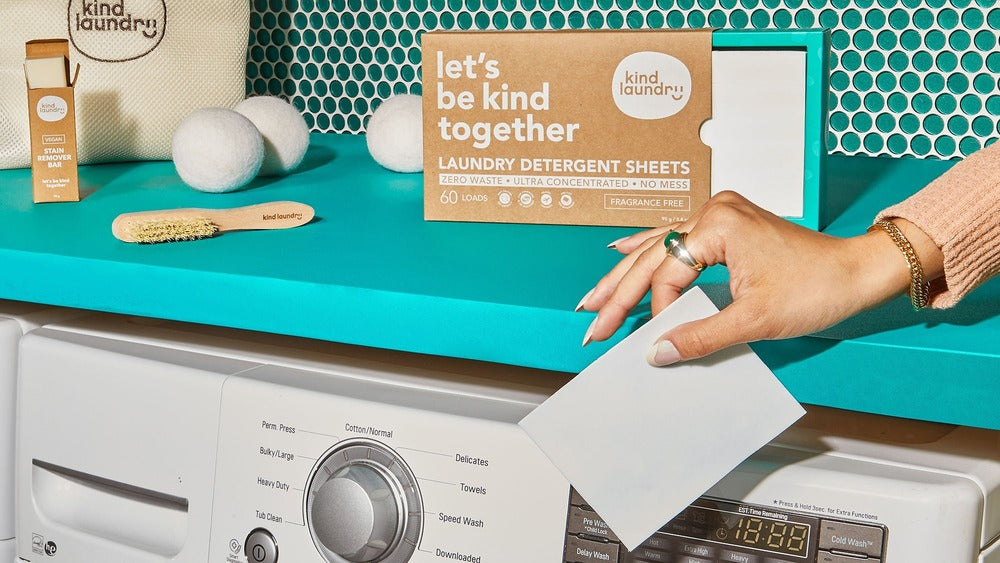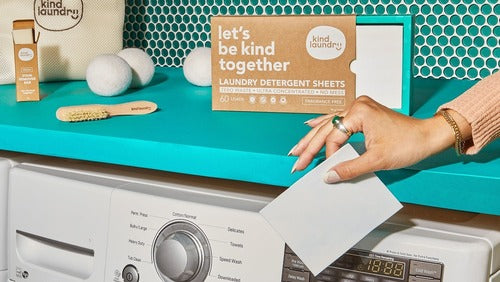Do you want to find out how to clean an upright washing machine?
Just like cleaning front loaders, top loading washing machines also require regular cleaning. That’s because over time, your washing machine can become clogged with excess detergent and softeners, and mold and mildew need to be removed if they’ve been allowed to build up.
In addition, because many people use washing machines almost daily to clean a wide range of dirt and grime from clothes and cloth diapers (including coffee stains, tea stains, and grass stains) – bacteria can accumulate which needs to be flushed out.
To complement our guide on how to clean your washing machine, this article helps provide useful information on how to clean a top load washer.
How Often to Clean a Top Load Washer? ⏰
All washing machines need to be cleaned regularly. Many top-loader machine manufacturers recommend cleaning these machines at least once a month, but there are differing views. Some say they should be cleaned at least twice a year, but very thoroughly.
One of the factors to consider when deciding how frequently to clean your top loader, is how often you use it. If you’re using it very frequently, then you will probably need to clean it more often.
One thing that most people agree on, is that the detergent dispensers should be cleaned out monthly so that they don’t get clogged. This can help ensure that your machine functions optimally and efficiently, helping to keep your clothes clean.
Another factor to consider when decking how frequently to clean your washing machine, is whether you have hard water or not. If you do, the minerals in the water can leave deposits in your machine's pipes that can make it get clogged over time. That’s why it’s good to have them cleaned at least every 3 months.
Furthermore, areas that are humid often attract more mold to build up, which makes it important to clean your washer more frequently. And, if you have a high-efficiency washer that has an impeller, then your machine may also require more frequent washing.

Cleaning a Top-Loading Washing Machine: Supplies 💦
Let’s get started with how to clean a top loading washing machine. The first step is to make sure you have the right supplies.
In terms of cleaning tools, a microfiber cloth is great for gently washing the outside of your washing machine. It's soft enough to avoid scratching the exterior. If there are crevices in the soap dispenser, or some ingrained dirt along the exterior, you may need to scrub them with a toothbrush or small scrubbing brush.
It’s a good idea to have some warm water to mix with your soap or detergent, which you can carry in a small bucket. And, if you’re going to be handling any chemicals, you may want to protect your skin by wearing gloves.
Next, you will want to choose your cleaning materials. Everyone has their own preferences, which may include:
- Chlorine bleach - which is often chosen as a remedy for mold
- Vinegar - which is a more natural cleaning alternative to using bleach
- Dishwashing detergent - which can be used to clean the exterior of your machine
- Specialized washing machine cleaning products - which may be recommended by your washing machine manufacturer
- Baking soda - which is a milder cleaning agent often used to help remove odors from clothing and washers
- Hydrogen peroxide - which is considered more mild than bleach and also effective for removing mold
When deciding which cleaning material to use, consider the impacts of chemicals like bleach on both our natural environment and your own health.
⚡Also, it’s vital to be aware that mixing chemicals can create toxic fumes, some of which can be potentially lethal. And, if you do use a cleaning agent like chlorine bleach, you’ll need to wash the machine thoroughly afterwards with water to ensure it is all flushed out of the machines.
Furthermore, it’s a good idea to check your user manual to see whether any cleaning products are recommended or advised against. You may want to use one cleaning agent for the exterior and another one for the inside of your washer.
How to Clean Your Top Load Washing Machine 💪
You’re not alone in waiting to know how to clean my top load washer. People everywhere are asking how to deep clean top load washer. Below is a step-by-step guide.
Before starting, check to make sure that the washer drum is emptied of clothes and that there’s no detergent in the dispensers. All ensure that the power is switched off to the washer while cleaning the exterior and interior.
👉 Wipe Down the Exterior
Don’t overlook cleaning the exterior of your washing machine. Not only is it important to wash off grime and dirt, kill germs, and keep your machine in tip-top condition, but it can help as a reminder to clean the inside too.
To wash the outside of your washing machine, use a soft, gentle cloth that won’t scratch your machine. A microfibre cloth is the perfect tool for this as it is soft and non-abrasive.
Mix warm water and dishwashing soap and dip your cloth into the solution to help clean the outside of the machine. Using a gentle and circular motion, wipe away any mold, grime, or dirt and try to keep the exterior dry as you go.
High-touch areas like the buttons, dials, or knobs may need some extra washing to clean away a build-up of grime.
When cleaning the exterior, it's also important to use chemicals that are safe and recommended by the manufacturer, so take a look at the user manual to see if there’s anything that you should avoid.
👉 Clean the Drum and Dispenser
How you clean your dispenser will depend on whether or not it’s removable. To find out if you can remove your dispenser, take a look at your machine’s user manual.
If you can remove your dispenser, take it out and wash it thoroughly with warm water. If there’s a build-up of detergent and grime, you can remove that using an old toothbrush to scrub off the dirt. Next, soak the dispenser in warm water for up to 15 minutes. Consider adding a cup of vinegar to help get rid of bacteria, mold and germs.
Now you can remove the dispenser from the vinegar solution and wash it again with water. Use a toothbrush or cloth to remove any remaining dirt you might see. Now you’re ready to put the dispensers back where you found them.
If you want to remove the dispensers, then you can use hot water mixed with vinegar and pour the solution into the dispensers. Let the solution remain there for 10 to 15 minutes so that it can act to loosen grime and destroy germs and mold. Now you can use a toothbrush to scrub off any residue and then flush out the vinegar solution.
The drum will be cleaned in the next steps when you run a hot wash cycle with your choice of cleaning agent. You can also use a soft cloth with warm water and diluted vinegar to gently scrub off any obvious signs of built up grime and dirt.
👉 Choose the Settings and Water Temperature
After you’ve wiped down the exterior of your washer and cleaned the drum and dispenser, it’s time to select the washer settings and water temperature.
When cleaning the machine, first check that the drum is empty and then select the hottest water setting and the longest wash cycle available. That will allow the machine to be cleaned as thoroughly as possible and for water to fill the drum completely.
👉 Add a Cleaning Agent
As mentioned above, there are a range of different cleaning agents that you can choose from to clean a top loading washing machine.
Some people prefer using chlorine bleach; others prefer more natural products like vinegar. Whatever you choose to use, make sure that you don't mix chemicals as that can be very dangerous. In particular, never mix vinegar and chlorine bleach as it can react to form chlorine gas that’s highly toxic and potentially lethal.
👉 Run the Wash Cycle
Once you’ve added a cleaning agent and have set the correct wash cycle, it’s time to let the machine run.
Make sure that whatever washing agent you use, that it’s totally washed away before you do your next wash load.
👉 Clean the Lint Filter
Cleaning a lint filter is easy, but it may take some sleuthing to discover where it's located. In top loaders that have agitators in the center, it’s usually located inside the agitator. But in newer machines that have the agitator at the bottom of the drum, they may not have a lint filter. And others may have a lint filter made from mesh that’s somewhere towards the rim of the drum.
It’s best to have a look at your washing machine’s user manual to see whether your model has a lint filter, where it’s located, and how to open and clean it. If you’ve lost the manual, it may be worth searching online for a user manual.
If you’re cleaning a removable agitator filter, you’ll need to remove it from the machine and wipe away lint using a paper towel or damp microfibre cloth. If that doesn’t remove all the lint, you can also soak the filter in warm water for 10 minutes and then scrub it gently with a toothbrush and a mild vinegar solution. Next wash with water and dry before placing it back in the washer.
👉 Run a Final Cycle
Once you’ve cleaned the dispensers and filled the drum with water, make sure that you’ve set your top loader to run on a full hot water, long cycle. Now you know all the steps for how to deep clean a top loading washing machine.

Cleaning a Top-Loading Washer Do’s and Don’ts ✅ ❌
Here are some do’s and don’ts about how to clean your washing machine top loader.
Do
- Do clean your top loader regularly
- Clean both the exterior and in the inside of your top loader, including the dispensers and drum
- Check your machine’s user manual for instructions of how to care for and clean your washer, and what chemicals can and can’t be used
Don’t
- Use any abrasive brushes or scrubs to clean your washer
- Mix any cleaning agents together when washing your top loader
- Use too much laundry detergent, as that can cause build up over time that clogs your machine
- Close the lid after a wash cycle is complete, as that traps heat and moisture which can lead to a build up of mold and mildew
Best Practices for Cleaning Top-Loading Washing Machine 🏆
If you’re looking for information on how to clean top load washing machine, then these best practices may be helpful.
Hopefully all your questions about “how do I clean my top load washing machine” will have been answered after reading these.
Get to know your washer by reading through the user manual. You may find information about which chemicals you can use in your machine, how to clean a top load washer, how to remove the detergent dispenser, and how to keep your machine functioning optimally.
Now that you know how to deep clean washing machine top loader, you should be keeping up with regular cleaning. In addition, you should check for signs of rust and damage and get your machine repaired promptly if you notice these, as that will help extend the life of your top loader.
One of the main reasons why your machine may stop cleaning optimally, is due to a build up of grime and detergent if you’re using too much detergent and softeners.
To use the optimal amount of detergent in every wash cycle, use Kind Laundry’s highly concentrated Laundry Detergent Sheets that are free from harmful chemicals like Parabens, Phthalates, Optical Brighteners, Dyes, Phosphates, and Formaldehyde.
It’s best to leave the lid open after you’ve used the washer so that the washer can air and dry out, thus helping to avoid mold and mildew from forming.
If you live in an area of high humidity, it’s important to take steps to reduce humidity in your washer.
That includes leaving the lid open between wash cycles so that the humidity from the wash can escape and to keep a flow of fresh air going through your machine. But, you may also want to consider an air conditioner or dehumidifier in your wash room to reduce the chances of mold and mildew forming in your washer.
Avoid storing cleaning products on your washer, because if they spill they could corrode and damage the exterior of the machine, and could also damage the electronic controls or piping at the back.
